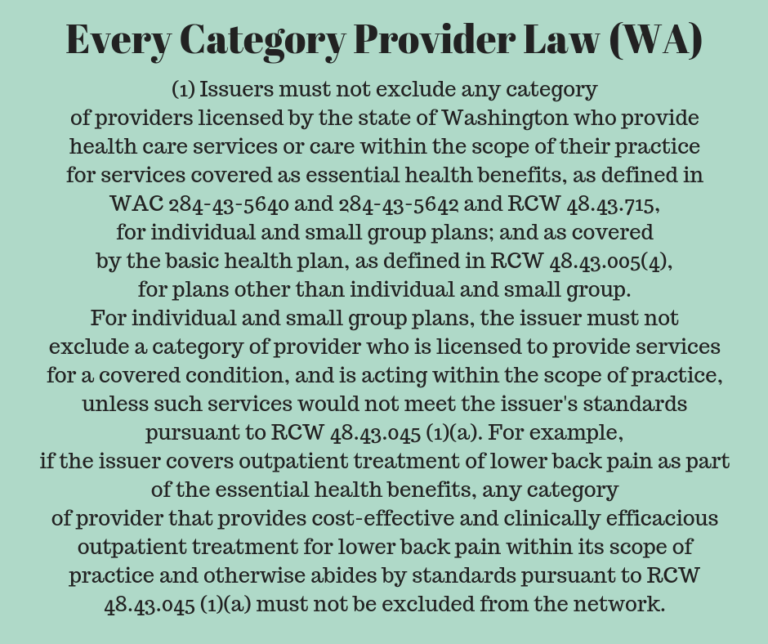The soothing touch of massage therapy can offer relief from a range of ailments, from chronic pain to stress-induced tension. But navigating the world of insurance coverage for massage can be a complex process. Many individuals wonder if their health plan covers massage therapy, and if so, what are the limitations and out-of-pocket costs involved? This guide aims to demystify the process, providing a comprehensive overview of massage therapy coverage and empowering you to make informed decisions about your healthcare.
From understanding the types of insurance plans that may cover massage to identifying the specific techniques eligible for reimbursement, we’ll explore the key factors that influence coverage and equip you with the knowledge to effectively navigate the system. We’ll also delve into the concept of medical necessity, discuss common exclusions and limitations, and provide insights into alternative payment options. By understanding the intricacies of massage therapy coverage, you can confidently access the benefits of this therapeutic modality while minimizing financial burden.
Insurance Coverage for Massage Therapy
Massage therapy is a growing field, with more and more people seeking its benefits for both physical and mental health. However, the cost of massage therapy can be a barrier for some individuals. Fortunately, some insurance plans may cover massage therapy, depending on the specific plan and the reason for the massage.
Types of Insurance Plans That May Cover Massage Therapy
Many insurance plans, including health maintenance organizations (HMOs), preferred provider organizations (PPOs), and some employer-sponsored plans, may cover massage therapy under certain circumstances.
Common Health Conditions Covered by Massage Therapy
Massage therapy is often used to treat a variety of health conditions, including:
- Back pain
- Neck pain
- Headaches
- Stress and anxiety
- Muscle tension
- Sports injuries
- Fibromyalgia
- Chronic pain
Factors Insurance Companies Consider for Coverage
Insurance companies typically consider several factors when determining whether to cover massage therapy, including:
- Medical necessity: The massage must be deemed medically necessary by a licensed healthcare provider, such as a doctor or physical therapist. This means the massage should be prescribed as part of a treatment plan for a specific medical condition.
- Diagnosis: The specific medical condition being treated must be covered by the insurance plan.
- Preauthorization: In some cases, preauthorization from the insurance company may be required before the massage can be performed.
- Provider network: The massage therapist must be in the insurance company’s network of providers.
- Coverage limits: There may be limitations on the number of massage therapy sessions covered per year.
Examples of Insurance Plans Offering Massage Therapy Coverage
Several insurance companies offer massage therapy coverage as part of their plans. However, the specific coverage varies depending on the plan and the insurance company.
- Blue Cross Blue Shield: Some Blue Cross Blue Shield plans may cover massage therapy for certain medical conditions, such as back pain or chronic pain. The coverage may be limited to a specific number of sessions per year.
- UnitedHealthcare: UnitedHealthcare offers massage therapy coverage through its health plans, but the coverage may vary depending on the plan and the specific medical condition being treated.
- Aetna: Aetna also offers massage therapy coverage under certain health plans. However, the coverage may be subject to preauthorization and other limitations.
Medical Necessity and Massage Therapy
Insurance coverage for massage therapy often hinges on the concept of medical necessity. This principle ensures that treatments, including massage, are deemed appropriate and essential for addressing a specific medical condition.
Documentation for Medical Necessity
Documentation plays a crucial role in establishing medical necessity. It provides evidence that massage therapy is a necessary component of a patient’s treatment plan.
- Physician’s Referral: A physician’s referral, outlining the patient’s diagnosis, treatment goals, and the rationale for massage therapy, is often a key requirement. The referral should clearly state the medical necessity of massage therapy and how it contributes to the overall treatment plan.
- Patient’s Medical History: A comprehensive medical history, including any pre-existing conditions, medications, and past treatments, helps demonstrate the need for massage therapy.
- Treatment Plan: A detailed treatment plan outlining the frequency, duration, and specific massage techniques to be used is essential. It should clearly connect the massage therapy to the patient’s medical condition and treatment goals.
- Progress Notes: Regular progress notes documenting the patient’s response to massage therapy, including any improvements or changes in symptoms, are vital. These notes help track the effectiveness of the treatment and support its ongoing medical necessity.
Role of a Healthcare Provider
A healthcare provider, typically a physician, plays a central role in determining the need for massage therapy.
- Diagnosis: The healthcare provider must diagnose the patient’s condition and determine if massage therapy is an appropriate treatment option.
- Treatment Plan Development: The provider collaborates with the patient to develop a comprehensive treatment plan that may include massage therapy as a component.
- Referral and Supervision: The provider refers the patient to a qualified massage therapist and may provide ongoing supervision to ensure the treatment is aligned with the patient’s medical needs.
Massage Therapy as Part of a Comprehensive Treatment Plan
Massage therapy can be integrated into a comprehensive treatment plan for a wide range of conditions.
- Chronic Pain Management: Massage therapy can help alleviate pain associated with conditions such as chronic back pain, arthritis, and fibromyalgia.
- Rehabilitation: Following injuries or surgery, massage therapy can aid in tissue repair, reduce inflammation, and improve range of motion.
- Stress Reduction: Massage therapy is known to reduce stress, anxiety, and depression, which can contribute to overall well-being and improve coping mechanisms.
Types of Massage Therapy Covered

Insurance coverage for massage therapy can vary widely depending on the insurance plan, the provider, and the reason for the massage. However, some types of massage therapy are more commonly covered than others.
Therapeutic Massage vs. Recreational Massage
Therapeutic massage is performed by a licensed massage therapist to address specific medical conditions or injuries. Recreational massage, on the other hand, is performed for relaxation and stress relief. While recreational massage may be covered by some insurance plans, it is less likely to be covered than therapeutic massage.
Types of Therapeutic Massage Covered
The types of therapeutic massage covered by insurance can vary, but some of the most common include:
- Swedish massage: This is a gentle massage that uses long strokes, kneading, and circular movements to relax muscles and improve circulation. Swedish massage is often used to relieve stress, reduce muscle tension, and improve range of motion.
- Deep tissue massage: This type of massage focuses on the deeper layers of muscle and fascia, using slower strokes and firmer pressure. Deep tissue massage is often used to treat chronic muscle pain, tightness, and injuries.
- Sports massage: This type of massage is designed to help athletes prepare for and recover from physical activity. It often includes stretching, trigger point therapy, and myofascial release.
- Prenatal massage: This type of massage is specifically designed for pregnant women and focuses on relieving pain and discomfort in the back, neck, and legs. It can also help to reduce stress and anxiety.
Massage Therapy Techniques
Different types of massage therapy use a variety of techniques to achieve different results. Some common techniques include:
- Effleurage: Long, gliding strokes that help to relax muscles and improve circulation.
- Petrissage: Kneading and lifting movements that help to break up muscle tension and improve blood flow.
- Tapotement: Rhythmic tapping or percussion movements that help to stimulate muscles and nerves.
- Trigger point therapy: Applying pressure to specific points in the muscle to relieve pain and tension.
- Myofascial release: Stretching and manipulating the fascia, the connective tissue that surrounds muscles, to improve flexibility and reduce pain.
Insurance Coverage Table
Here is a table outlining the types of massage therapy covered by different insurance plans:
| Insurance Plan | Swedish Massage | Deep Tissue Massage | Sports Massage | Prenatal Massage |
|---|---|---|---|---|
| Plan A | Covered | Covered | Not Covered | Covered |
| Plan B | Covered | Not Covered | Not Covered | Not Covered |
| Plan C | Covered | Covered | Covered | Covered |
Note: This table is for illustrative purposes only and may not reflect the actual coverage of your insurance plan. It is important to contact your insurance provider to confirm the specific benefits and limitations of your plan.
Out-of-Pocket Costs
While insurance may cover some or all of the cost of massage therapy, you may still be responsible for some out-of-pocket expenses. These costs can vary significantly depending on your insurance plan, the type of massage you receive, and your provider’s fees.
Co-pays, Deductibles, and Coinsurance
Your insurance plan may require you to pay a co-pay for each massage session. Co-pays are fixed amounts that you pay at the time of service. Additionally, you may have a deductible, which is the amount you must pay out-of-pocket before your insurance coverage kicks in. Once you’ve met your deductible, your insurance may cover a portion of the remaining costs, known as coinsurance. Coinsurance is typically expressed as a percentage, such as 80/20, meaning your insurance covers 80% of the costs, and you pay 20%.
For example, if your co-pay is $20, your deductible is $500, and your coinsurance is 80/20, and the total cost of your massage session is $100, you would pay $20 (co-pay) + $500 (deductible) + $20 (20% coinsurance) = $540 out-of-pocket.
Health Savings Accounts (HSAs) and Flexible Spending Accounts (FSAs)
You may be able to use a Health Savings Account (HSA) or Flexible Spending Account (FSA) to pay for massage therapy expenses. HSAs are tax-advantaged savings accounts available to those with high-deductible health plans. FSAs are employer-sponsored accounts that allow you to set aside pre-tax dollars for eligible medical expenses, including massage therapy.
Tips for Minimizing Out-of-Pocket Costs
- Check your insurance plan benefits and coverage for massage therapy.
- Choose a massage therapist who is in-network with your insurance plan.
- Ask about discounts or payment plans offered by the massage therapist.
- Consider using an HSA or FSA to pay for massage therapy expenses.
Finding a Covered Massage Therapist

Finding a massage therapist who accepts your insurance can be a key step in maximizing your benefits and getting the most out of your coverage. This process involves a few steps to ensure you find a qualified professional who aligns with your needs and insurance plan.
Verifying Insurance Coverage
It’s crucial to verify your insurance coverage before scheduling an appointment. Contact your insurance provider directly to confirm:
- Whether massage therapy is covered under your plan.
- The extent of coverage, including the number of sessions allowed and the amount covered per session.
- Any specific requirements for coverage, such as a referral from a physician.
- Whether there are any limitations on the types of massage therapy covered.
By understanding your insurance coverage beforehand, you can avoid unexpected costs and ensure a smooth experience.
Finding Massage Therapists
Several resources can help you locate massage therapists in your area who accept your insurance:
- Insurance Provider’s Network: Most insurance companies maintain a network of providers who accept their plans. You can access this network online or by contacting your insurance provider directly.
- Online Directories: Websites like Healthgrades, Zocdoc, and MassageBook allow you to search for massage therapists based on location, insurance acceptance, and other criteria.
- Professional Organizations: Associations such as the American Massage Therapy Association (AMTA) and the National Certification Board for Therapeutic Massage & Bodywork (NCBTMB) often have directories of certified massage therapists.
- Word-of-Mouth: Ask your friends, family, and colleagues for recommendations on massage therapists they’ve had positive experiences with.
It’s important to remember that even if a therapist is listed as accepting your insurance, it’s always best to confirm coverage before scheduling an appointment.
Choosing a Qualified Massage Therapist
Once you’ve identified potential therapists, consider the following factors when making your choice:
- Credentials: Look for therapists who are licensed, certified, or registered in your state. They should also have appropriate training and experience in the type of massage therapy you’re seeking.
- Specializations: If you have specific needs, such as chronic pain or sports injuries, choose a therapist who specializes in those areas.
- Communication: A good therapist should be able to listen to your concerns and explain their treatment plan clearly. They should also be comfortable answering your questions.
- Comfort Level: It’s essential to feel comfortable with your therapist. Schedule a consultation or phone call to get a sense of their personality and approach.
Investing time in finding a qualified and experienced massage therapist who aligns with your needs and insurance coverage can lead to a more effective and satisfying experience.
Benefits of Massage Therapy Coverage
Massage therapy coverage can provide individuals with access to a valuable tool for improving their overall well-being. By covering the cost of massage therapy, insurance plans can help individuals manage pain, improve mobility, and promote relaxation.
Benefits of Massage Therapy
Massage therapy offers a range of potential health benefits. It can help individuals manage pain, improve mobility, reduce stress, and enhance sleep quality.
- Pain Management: Massage therapy can be effective in managing chronic pain conditions such as back pain, neck pain, and headaches. Massage techniques can help relax muscles, improve circulation, and reduce inflammation, all of which can contribute to pain relief.
- Improved Mobility: Massage therapy can help improve range of motion and flexibility by loosening tight muscles and increasing joint mobility. This can be particularly beneficial for individuals with conditions such as arthritis or muscle strains.
- Stress Reduction: Massage therapy can promote relaxation and reduce stress by stimulating the release of endorphins, which have mood-boosting effects. It can also help reduce cortisol levels, the hormone associated with stress.
- Enhanced Sleep: Massage therapy can improve sleep quality by reducing stress and promoting relaxation. It can also help regulate the body’s natural sleep-wake cycle.
- Other Potential Benefits: Massage therapy may also offer benefits for conditions such as anxiety, depression, and digestive issues. However, more research is needed to fully understand the extent of these benefits.
Examples of How Massage Therapy Can be Used to Promote Relaxation and Reduce Stress
Massage therapy can be a valuable tool for promoting relaxation and reducing stress.
- Swedish Massage: This type of massage involves long, flowing strokes that help relax muscles and promote circulation. It is often used to relieve stress and promote relaxation.
- Deep Tissue Massage: This type of massage focuses on deeper layers of muscle tissue and fascia. It can be helpful for relieving chronic muscle tension and pain.
- Aromatherapy Massage: This type of massage incorporates essential oils into the massage oil. The scents of the essential oils can help promote relaxation and reduce stress.
Potential Benefits of Massage Therapy Coverage for Individuals
Massage therapy coverage can offer several benefits for individuals.
- Improved Access to Care: Coverage can make massage therapy more accessible to individuals who might not otherwise be able to afford it.
- Cost Savings: Coverage can help individuals save money on the cost of massage therapy, especially for those who require regular treatments.
- Improved Health Outcomes: By promoting access to massage therapy, coverage can help individuals manage pain, improve mobility, and reduce stress, ultimately leading to better health outcomes.
- Increased Well-being: Massage therapy can promote relaxation and reduce stress, contributing to overall well-being.
Common Exclusions and Limitations
While massage therapy coverage can be a valuable benefit, it’s crucial to understand the potential exclusions and limitations that may apply. These restrictions can vary significantly depending on the specific insurance plan and the provider’s policies.
Pre-authorization Requirements
Many insurance plans require pre-authorization for massage therapy services. This process involves obtaining approval from the insurer before receiving treatment. The purpose of pre-authorization is to ensure that the massage therapy is medically necessary and falls within the coverage guidelines. It also helps control costs and prevent unnecessary procedures.
Examples of Exclusions
Massage therapy may not be covered by insurance in certain scenarios, such as:
* Non-medically necessary treatments: Massage therapy for relaxation or general well-being is typically not covered. Coverage is usually limited to treatments related to specific medical conditions or injuries.
* Massage for cosmetic purposes: Massage therapy for enhancing appearance or addressing aesthetic concerns is generally excluded.
* Massage performed by non-licensed professionals: Insurance plans usually require massage therapy to be provided by a licensed and qualified therapist.
* Exceeding coverage limits: Many plans have annual or lifetime limits on the amount of massage therapy coverage available.
* Massage for chronic conditions: While massage therapy can be beneficial for managing chronic conditions, some insurance plans may have restrictions on the number of sessions covered or the duration of treatment.
* Massage for recreational activities: Massage therapy related to sports training or athletic performance is typically not covered.
Common Exclusions and Limitations Table
| Exclusion or Limitation | Description |
|---|---|
| Non-medically necessary treatments | Massage therapy for relaxation or general well-being is usually not covered. |
| Pre-authorization requirement | Many plans require pre-authorization for massage therapy services. |
| Massage for cosmetic purposes | Massage therapy for enhancing appearance or addressing aesthetic concerns is generally excluded. |
| Massage performed by non-licensed professionals | Insurance plans usually require massage therapy to be provided by a licensed and qualified therapist. |
| Exceeding coverage limits | Many plans have annual or lifetime limits on the amount of massage therapy coverage available. |
| Massage for chronic conditions | While massage therapy can be beneficial for managing chronic conditions, some insurance plans may have restrictions on the number of sessions covered or the duration of treatment. |
| Massage for recreational activities | Massage therapy related to sports training or athletic performance is typically not covered. |
Alternative Payment Options
While insurance coverage can significantly reduce the cost of massage therapy, not everyone has access to such coverage. Fortunately, alternative payment options exist, allowing individuals to receive massage therapy without relying solely on insurance.
Self-Pay for Massage Therapy
Self-pay refers to paying for massage therapy out of pocket, without using insurance. This option provides flexibility and control over the massage therapy experience, allowing individuals to choose the therapist and type of massage they prefer. It also avoids potential limitations or restrictions imposed by insurance plans.
Navigating Insurance Claims

Successfully navigating the process of filing an insurance claim for massage therapy services can be a straightforward process when you understand the key steps involved. While the specific procedures may vary depending on your insurance provider, the fundamental principles remain consistent.
Submitting a Claim
Before submitting a claim, gather all necessary documentation, including your insurance card, the massage therapist’s provider number, and a detailed invoice outlining the dates of service, types of massage received, and the total cost. Submit the claim form to your insurance provider via mail, fax, or online portal, following their specific instructions.
Completing the Claim Form Accurately
Completing the claim form accurately is crucial for timely processing. Double-check all details, including your personal information, the date of service, the massage therapist’s information, and the diagnosis code, if applicable. Provide a clear and concise description of the services received.
Keeping Detailed Records
Maintaining detailed records of your massage therapy sessions is essential for claim processing and potential appeals. Keep a record of each session, including the date, time, duration, type of massage received, and the massage therapist’s name. This documentation will be invaluable if you need to provide supporting evidence for your claim.
Common Claim Denial Reasons and Appeals
Claims for massage therapy services may be denied for several reasons, including:
- Lack of medical necessity documentation: Your insurance provider may require a physician’s referral or documentation from a qualified healthcare professional supporting the need for massage therapy.
- Exceeding coverage limits: Most insurance plans have annual or lifetime limits on the amount of coverage available for massage therapy.
- Using an out-of-network provider: Ensure that your massage therapist is in your insurance network to avoid higher out-of-pocket costs or claim denials.
If your claim is denied, review the denial letter carefully to understand the reason. Gather any supporting documentation, such as medical records or a letter from your physician, to support your appeal. Contact your insurance provider to initiate the appeal process, outlining your reasons for disputing the denial and providing relevant evidence.
Future Trends in Massage Therapy Coverage

The landscape of insurance coverage for massage therapy is evolving rapidly, driven by factors such as increasing awareness of its benefits, technological advancements, and a growing emphasis on holistic healthcare. This section explores some key trends that are likely to shape the future of massage therapy coverage.
The Rise of Telehealth and Virtual Massage Therapy
Telehealth has revolutionized healthcare delivery, and massage therapy is no exception. Virtual massage therapy, using platforms like video conferencing, allows individuals to receive massage services remotely. Insurance companies are increasingly recognizing the value of virtual massage therapy, especially for individuals with limited mobility or those living in rural areas. This trend is likely to accelerate as technology advances and more evidence supporting the effectiveness of virtual massage therapy emerges.
The Impact of Emerging Research on Massage Therapy Benefits
Ongoing research is continually uncovering new benefits of massage therapy, which could influence insurance coverage. Studies are exploring the efficacy of massage therapy in treating conditions such as chronic pain, anxiety, and depression. As research strengthens the evidence base for massage therapy’s effectiveness, insurance companies may be more inclined to cover it for a wider range of conditions.
Adapting Insurance Policies to Embrace Massage Therapy
Insurance companies are adapting their policies to reflect the growing acceptance of massage therapy. Some insurers are already offering coverage for massage therapy as a preventive measure, while others are expanding their coverage to include a wider range of conditions. This trend is likely to continue as more evidence supports the benefits of massage therapy and as consumer demand for coverage increases.
Last Point

Ultimately, the availability and extent of massage therapy coverage vary significantly depending on your insurance plan, healthcare provider, and the specific massage techniques you seek. However, with a clear understanding of the factors that influence coverage, you can advocate for yourself, explore alternative payment options, and potentially unlock the therapeutic benefits of massage therapy within the framework of your insurance plan. Remember, proactive communication with your insurance provider and healthcare professionals can play a pivotal role in maximizing your coverage and achieving your desired health outcomes.

